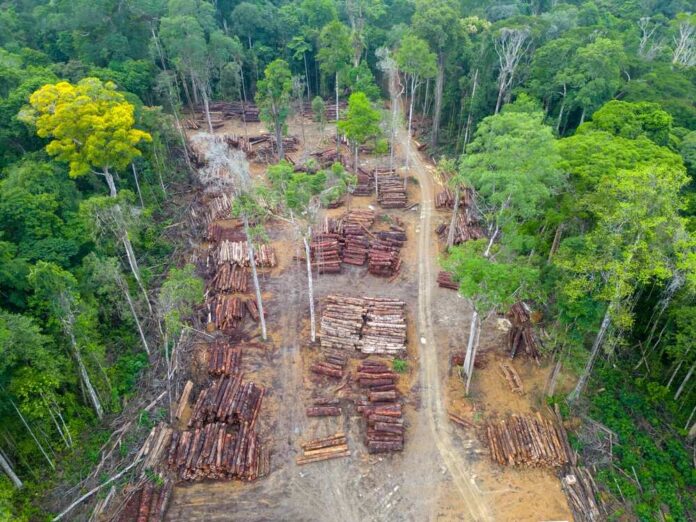
Logging, America’s deadliest profession, offers high wages but faces industry decline and safety challenges.
At a Glance
- Logging workers have the highest fatal injury rate among U.S. jobs, ranging from 82.2 to 100 deaths per 100,000 workers.
- Despite risks, logging offers higher wages, with average timber industry wages in Oregon 17% above local private-sector wages.
- The logging industry has declined since the 1990s due to international competition and conservation laws.
- Employment in Oregon’s logging industry dropped from 11,000 in 1990 to 4,400 by 2024.
- Oregon OSHA conducts numerous inspections of logging companies, identifying violations and imposing penalties.
The Perils of Logging: America’s Most Dangerous Profession
Logging stands out as the most hazardous occupation in America, with fatal injury rates far surpassing other high-risk professions. The combination of heavy machinery, massive trees, steep terrain, and harsh weather conditions creates a perfect storm of danger for those in the industry. These factors contribute to the alarmingly high fatality rate, which ranges from 82.2 to 100 deaths per 100,000 workers.
The risks associated with logging are not limited to a single cause. Workers face threats from falling trees, equipment malfunctions, and treacherous environmental conditions. The remote nature of many logging sites also complicates rescue efforts when accidents occur, further increasing the potential for fatal outcomes.
High Wages Offset High Risks
Despite the extreme dangers, the logging industry continues to attract workers due to its relatively high wages. In Oregon, a state known for its timber industry, average wages in logging are 17% higher than local private-sector wages. This financial incentive provides a strong motivation for individuals to enter and remain in the profession, despite the inherent risks.
“When looking at the potential risk posed by any given occupation, it often isn’t enough to just look at the total number of fatalities, as this is likely to be overrepresented in jobs that have a large population of workers to begin with. By looking at rates of fatal injuries, we were able to obtain a clearer understanding of which jobs pose the greatest risk, as a proportion of the number of workers and hours worked for each occupation.” – Michael Agruss, Managing Partner at Agruss Law Firm
Logging is, in fact, the most dangerous job in America #RNC https://t.co/NZugyjqFJd pic.twitter.com/pYFblvNa85
— Bloomberg Opinion (@opinion) August 27, 2020
The higher wages not only compensate for the risks but also reflect the skill and experience required in the logging industry. Operators must be proficient in handling complex machinery and making split-second decisions in dangerous situations. This combination of high risk and high skill commands a premium in the labor market.
Industry Decline and Its Impact
While logging remains a crucial industry in certain regions, it has faced significant decline since the 1990s. International competition and increased conservation efforts have led to a sharp reduction in logging activities, particularly in areas like the Pacific Northwest. In Oregon alone, employment in the logging industry plummeted from 11,000 workers in 1990 to just 4,400 by 2024.
This decline has had profound implications for communities that have historically relied on logging as a primary source of income. Families and entire towns have been forced to adapt to the changing economic landscape, often struggling to find alternative sources of employment that offer comparable wages.
Safety Measures and Regulatory Oversight
Given the high-risk nature of logging, safety measures and regulatory oversight play a crucial role in protecting workers. The Occupational Safety and Health Administration (OSHA) conducts regular inspections of logging companies, identifying violations and imposing penalties to enforce safety standards. These efforts aim to reduce the number of fatal accidents and improve overall working conditions in the industry.
Despite these regulatory efforts, the inherent dangers of logging persist. The industry continues to grapple with the challenge of balancing productivity with worker safety, a task made more difficult by the unpredictable nature of the work environment. As logging companies strive to improve safety records, they must also contend with the economic pressures of a declining industry, creating a complex landscape for both workers and employers.














